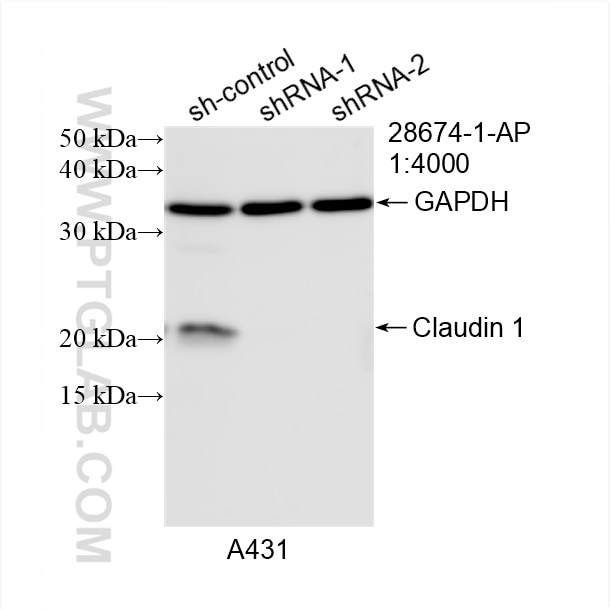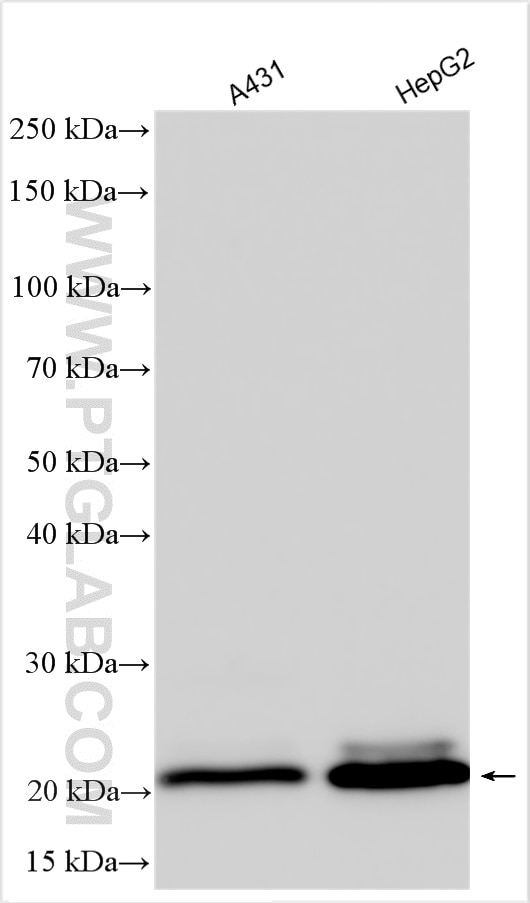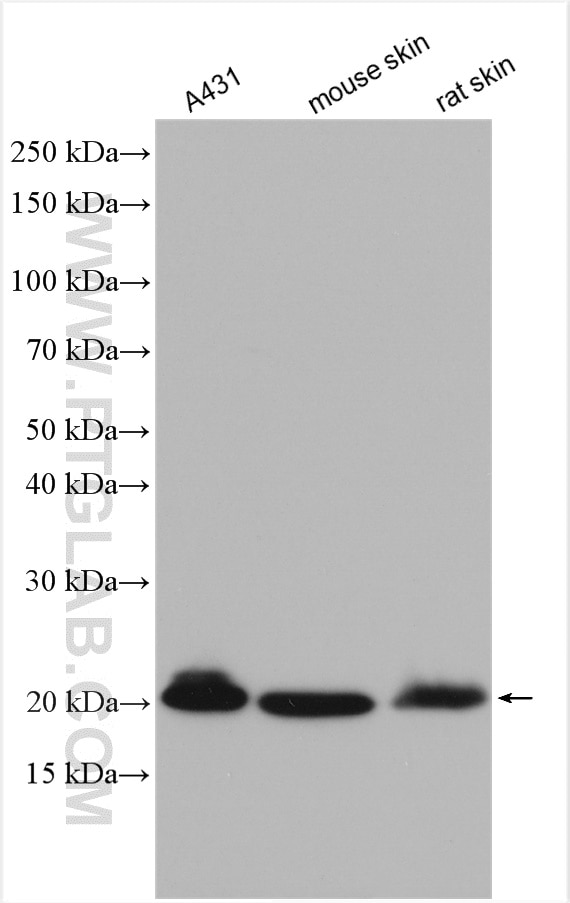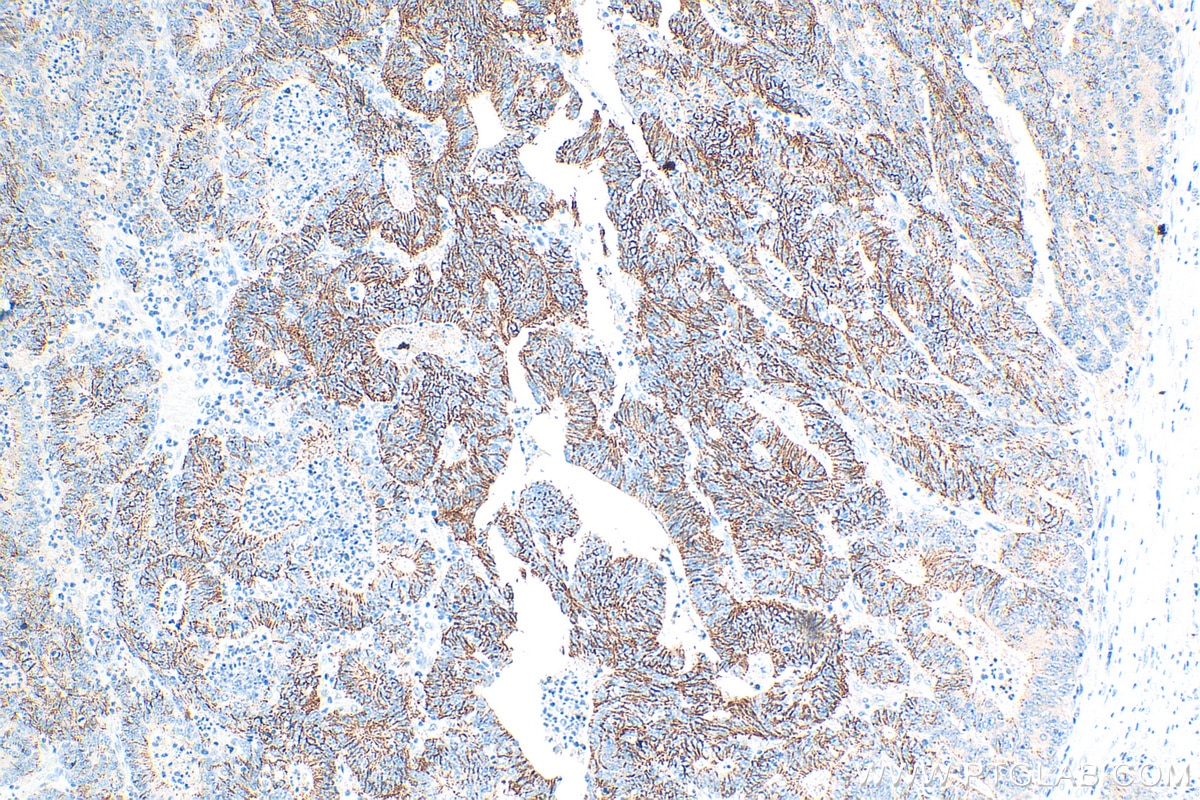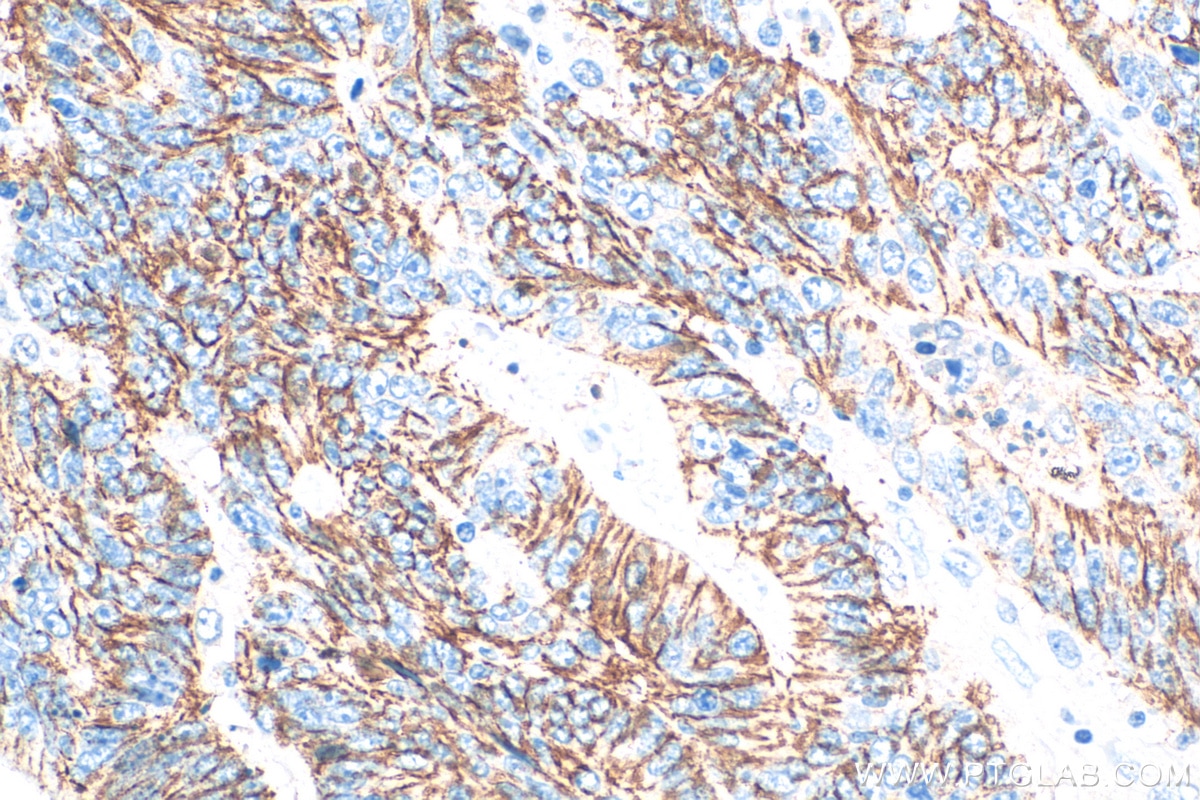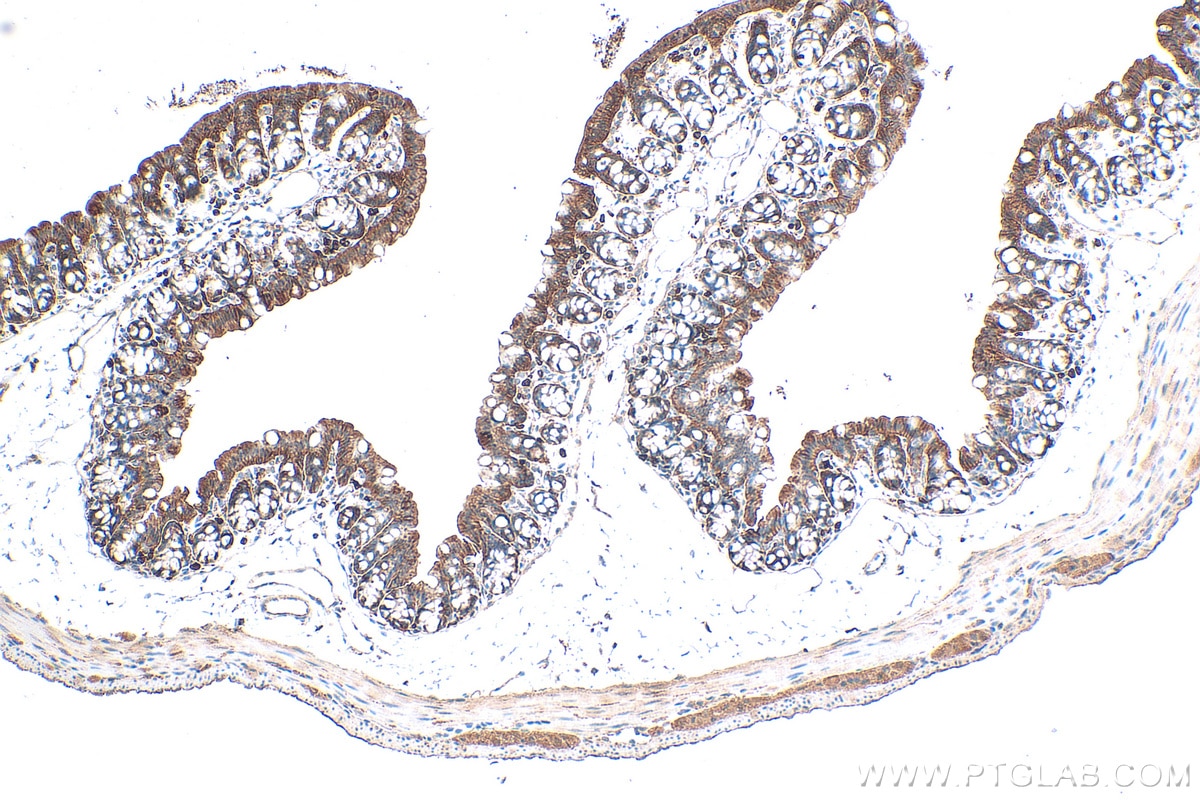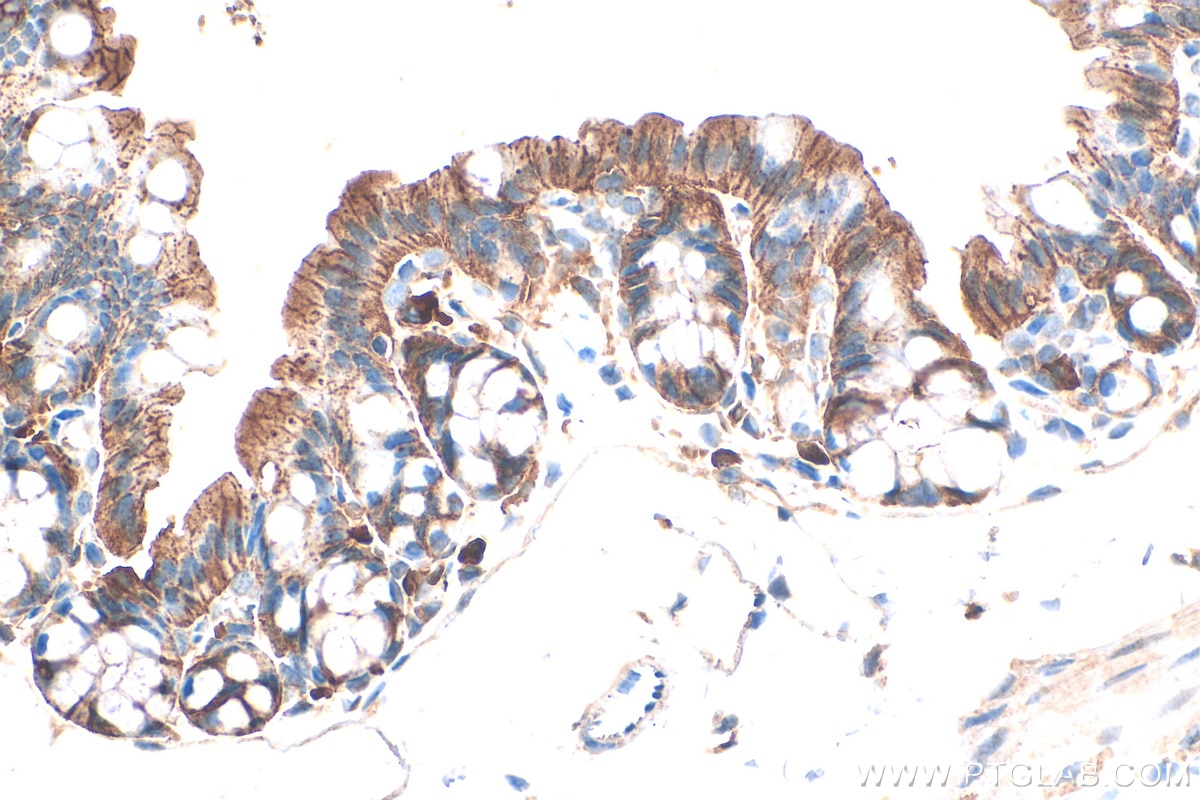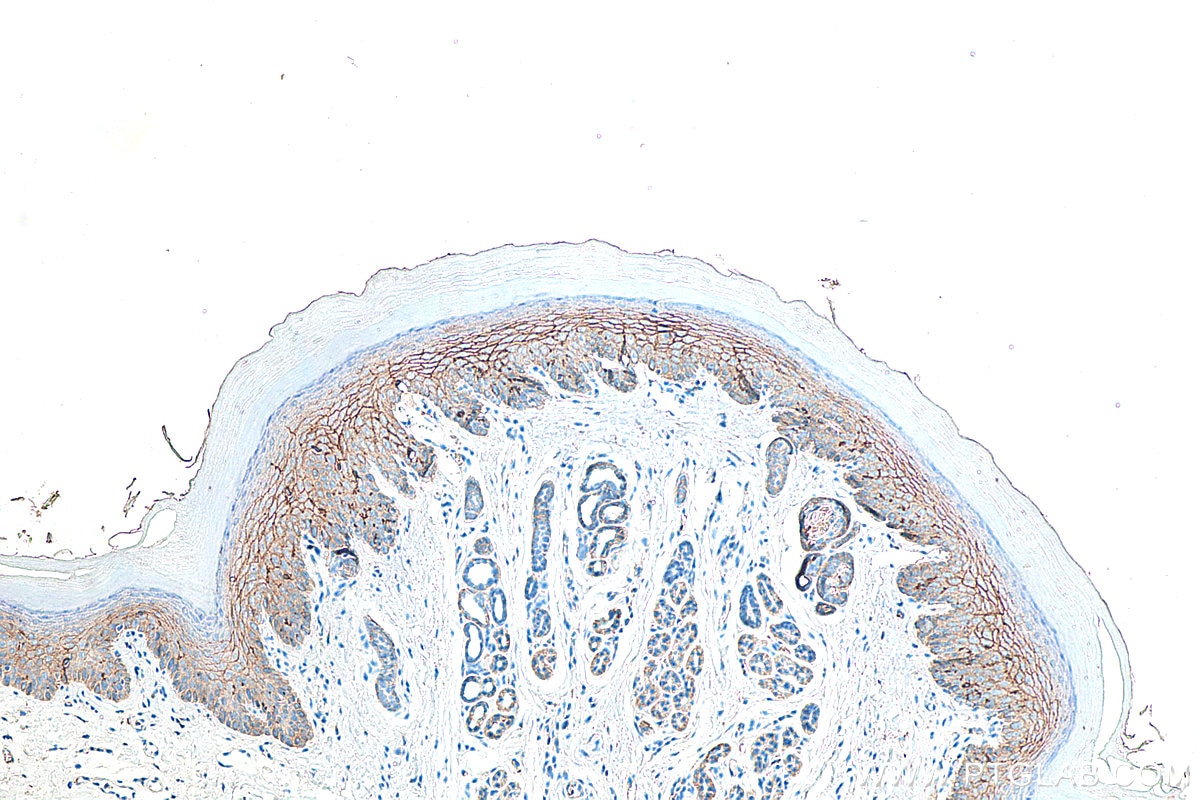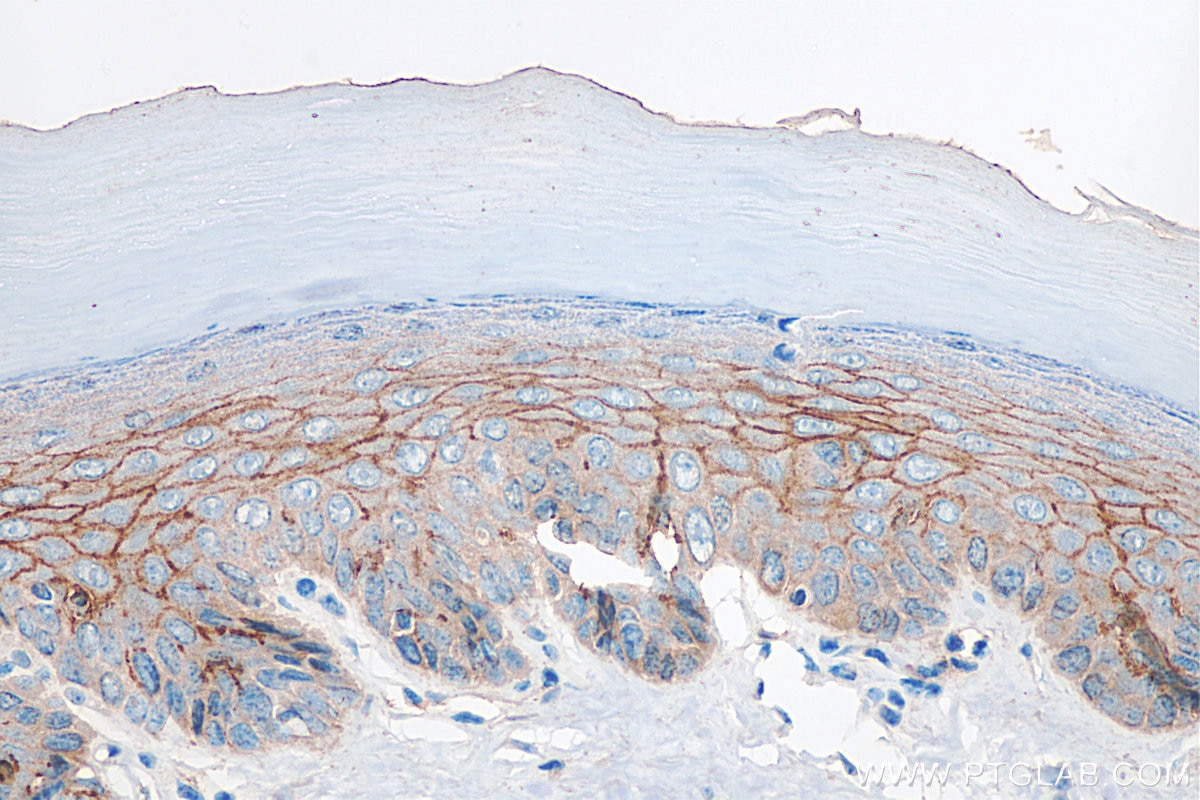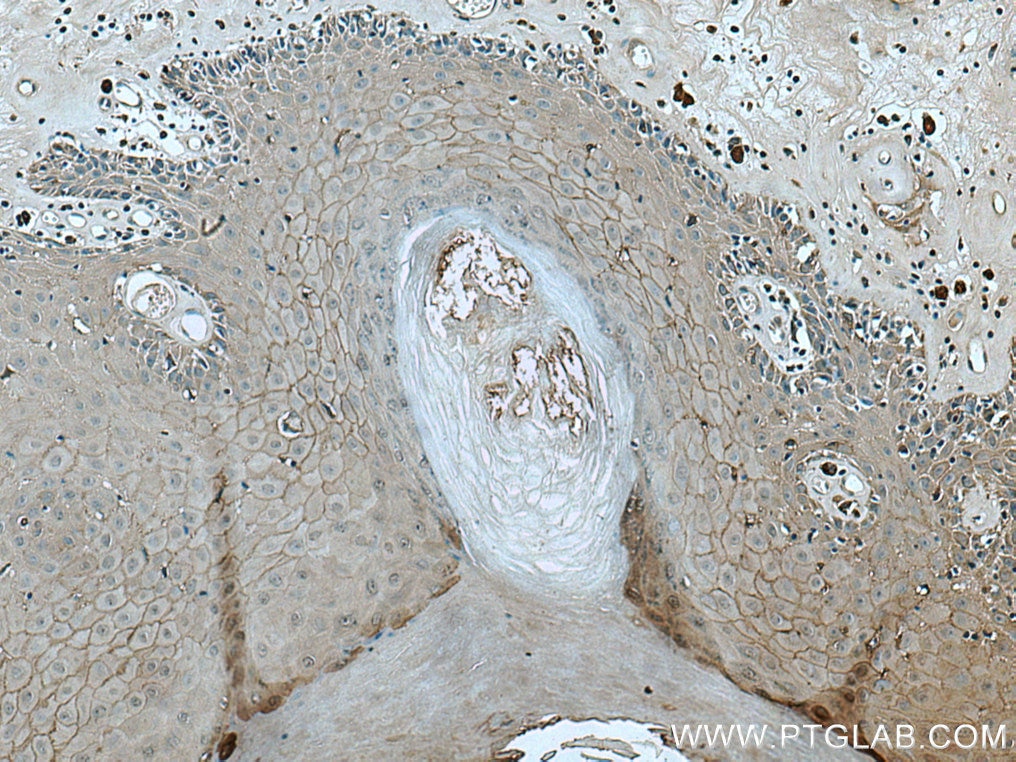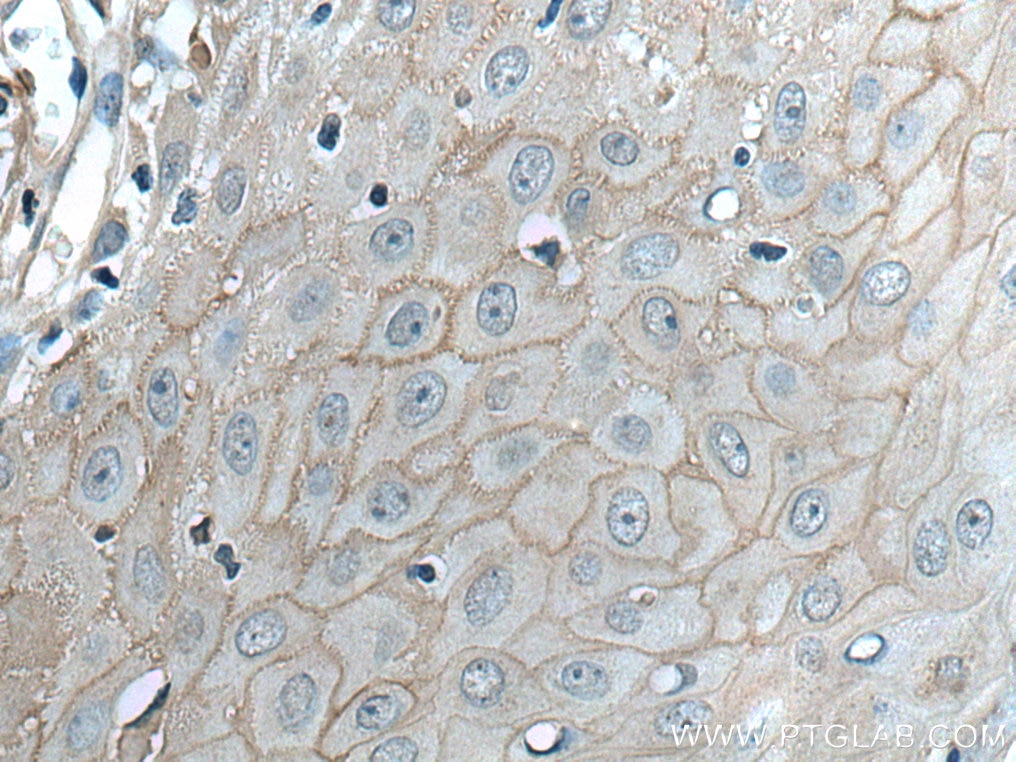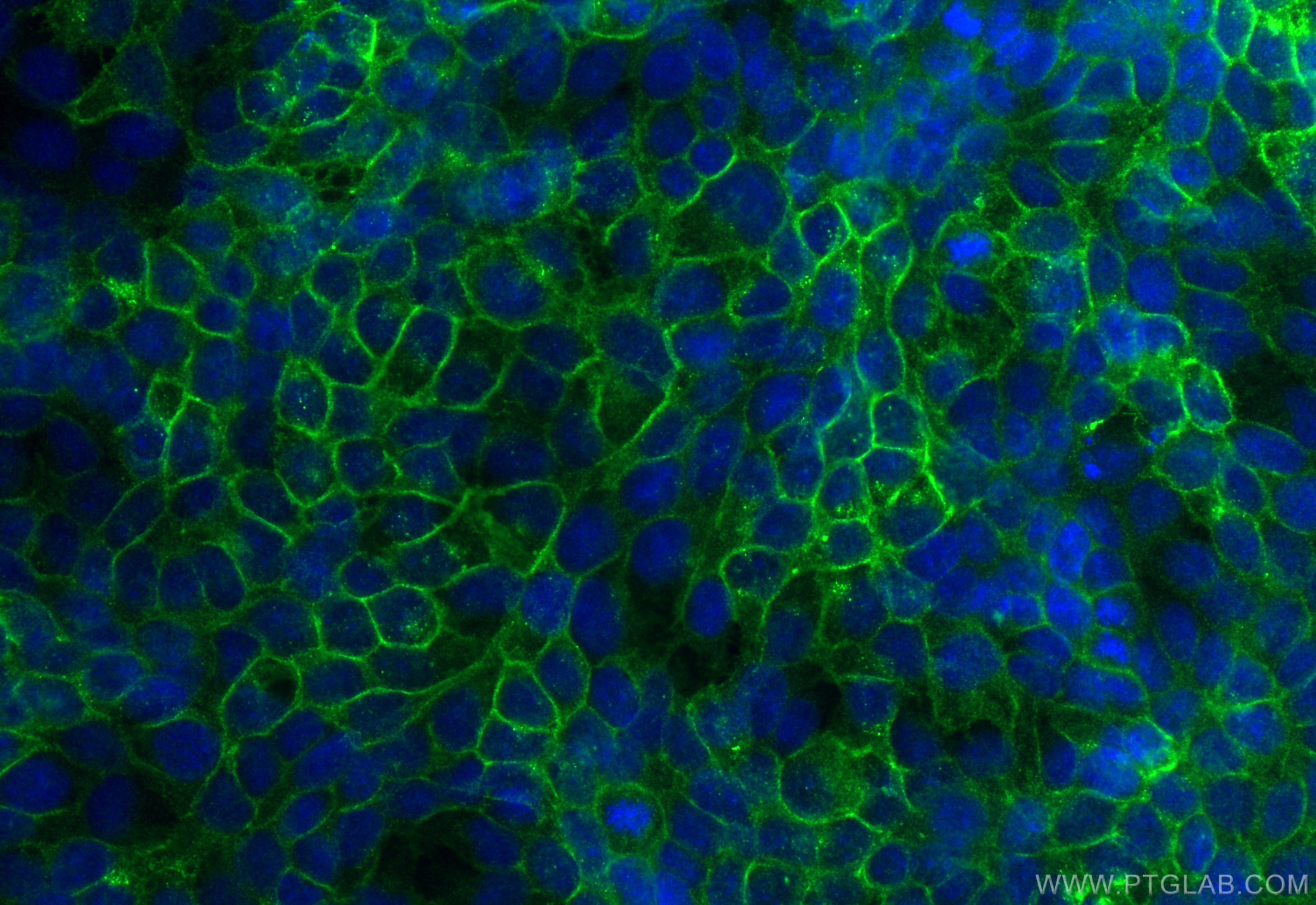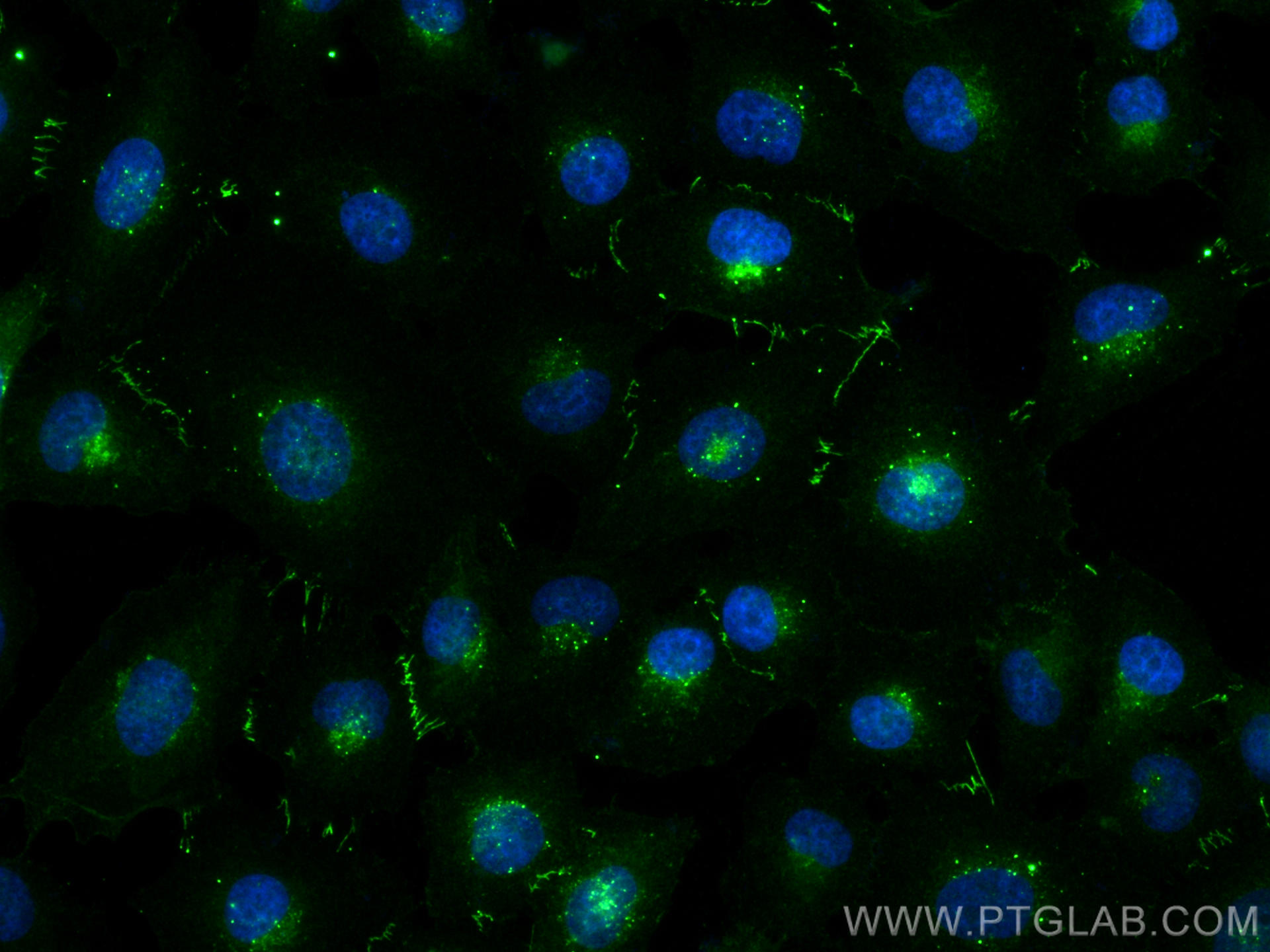- Phare
- Validé par KD/KO
Anticorps Polyclonal de lapin anti-Claudin 1
Claudin 1 Polyclonal Antibody for WB, IHC, IF/ICC, ELISA
Hôte / Isotype
Lapin / IgG
Réactivité testée
Humain, rat, souris et plus (3)
Applications
WB, IHC, IF/ICC, ELISA
Conjugaison
Non conjugué
N° de cat : 28674-1-AP
Synonymes
Galerie de données de validation
Applications testées
| Résultats positifs en WB | cellules A431, cellules HepG2, tissu cutané de rat, tissu cutané de souris |
| Résultats positifs en IHC | tissu de cancer du côlon humain, tissu cutané de souris, tissu de cancer de la peau humain, tissu de côlon de souris il est suggéré de démasquer l'antigène avec un tampon de TE buffer pH 9.0; (*) À défaut, 'le démasquage de l'antigène peut être 'effectué avec un tampon citrate pH 6,0. |
| Résultats positifs en IF/ICC | cellules HaCaT, cellules HUVEC |
Dilution recommandée
| Application | Dilution |
|---|---|
| Western Blot (WB) | WB : 1:1000-1:6000 |
| Immunohistochimie (IHC) | IHC : 1:500-1:2000 |
| Immunofluorescence (IF)/ICC | IF/ICC : 1:50-1:500 |
| It is recommended that this reagent should be titrated in each testing system to obtain optimal results. | |
| Sample-dependent, check data in validation data gallery | |
Applications publiées
| KD/KO | See 1 publications below |
| WB | See 117 publications below |
| IHC | See 33 publications below |
| IF | See 40 publications below |
Informations sur le produit
28674-1-AP cible Claudin 1 dans les applications de WB, IHC, IF/ICC, ELISA et montre une réactivité avec des échantillons Humain, rat, souris
| Réactivité | Humain, rat, souris |
| Réactivité citée | rat, bovin, canin, Humain, porc, souris |
| Hôte / Isotype | Lapin / IgG |
| Clonalité | Polyclonal |
| Type | Anticorps |
| Immunogène | Claudin 1 Protéine recombinante Ag29269 |
| Nom complet | claudin 1 |
| Masse moléculaire calculée | 211 aa, 23 kDa |
| Poids moléculaire observé | 20-23 kDa |
| Numéro d’acquisition GenBank | BC012471 |
| Symbole du gène | Claudin 1 |
| Identification du gène (NCBI) | 9076 |
| Conjugaison | Non conjugué |
| Forme | Liquide |
| Méthode de purification | Purification par affinité contre l'antigène |
| Tampon de stockage | PBS with 0.02% sodium azide and 50% glycerol |
| Conditions de stockage | Stocker à -20°C. Stable pendant un an après l'expédition. L'aliquotage n'est pas nécessaire pour le stockage à -20oC Les 20ul contiennent 0,1% de BSA. |
Informations générales
Claudins are a family of proteins that are the most important components of tight junctions, where they establish the paracellular barrier that controls the flow of molecules in the intercellular space between the cells of an epithelium. 23 claudins have been identified. They are small (20-27 kilodalton (kDa)) proteins with similar structures. They have four transmembrane domains, with the N-terminus and the C-terminus in the cytoplasm. Claudin-1 is an integral membrane protein expressed primarily in keratinocytes and normal mammary epithelial cells. Claudin 1 forms tight junctions with other claudin proteins and plays an important role in the intestinal epithelial barrier.
Protocole
| Product Specific Protocols | |
|---|---|
| WB protocol for Claudin 1 antibody 28674-1-AP | Download protocol |
| IHC protocol for Claudin 1 antibody 28674-1-AP | Download protocol |
| IF protocol for Claudin 1 antibody 28674-1-AP | Download protocol |
| Standard Protocols | |
|---|---|
| Click here to view our Standard Protocols |
Publications
| Species | Application | Title |
|---|---|---|
Microbiome Arula-7 powder improves diarrhea and intestinal epithelial tight junction function associated with its regulation of intestinal flora in calves infected with pathogenic Escherichia coli O1 | ||
J Nanobiotechnology Human umbilical cord mesenchymal stem cells derived exosome shuttling mir-129-5p attenuates inflammatory bowel disease by inhibiting ferroptosis | ||
Matrix Biol Ameloblastin promotes polarization of ameloblast cell lines in a 3-D cell culture system | ||
Int J Biol Macromol Anionic polysaccharides benefit the bioavailability of pork myofibrillar protein gels: Evidence from a perspective of protein absorption and metabolism | ||
Phytomedicine Licorice-regulated gut-joint axis for alleviating collagen-induced rheumatoid arthritis | ||
Biomed Pharmacother Bacterial butyrate mediates the anti-atherosclerotic effect of silybin |
